Science is not like the Olympic Games or something where there's a lot of people all trying to win gold medals, and if you don't get a gold medal, you're nothing. There are actually a lot of people working together and contributing to the science — and the science is the important thing.

Frederick Sanger was born in Rendcomb, Gloucestershire in the southwest of England. His father was a physician. When he was five, he moved, with his father, mother and an older brother to Tanworth-in-Arden, another small village, southeast of the city of Birmingham, not far from Shakespeare’s home town of Stratford-on-Avon. As a boy, Frederick Sanger enjoyed exploring the nearby woods and countryside with his older brother, Theo. Together they studied the local wildlife, encouraging Frederick’s interest in science and the natural world. At age seven he was sent to Bryanston School, a private boarding school, and later to Brownsmith School in Dorset, where a sympathetic teacher encouraged his interest in chemistry. It was expected that Frederick would follow his father’s example and become a physician, but by the time he entered St. John’s College, Cambridge, he had decided to pursue a career in scientific research. Once there, his attention soon turned to the emerging science of biochemistry. After completing his undergraduate degree in 1939, he went to work at the newly established biochemistry laboratory in Cambridge. It would remain his professional home for the rest of his career.
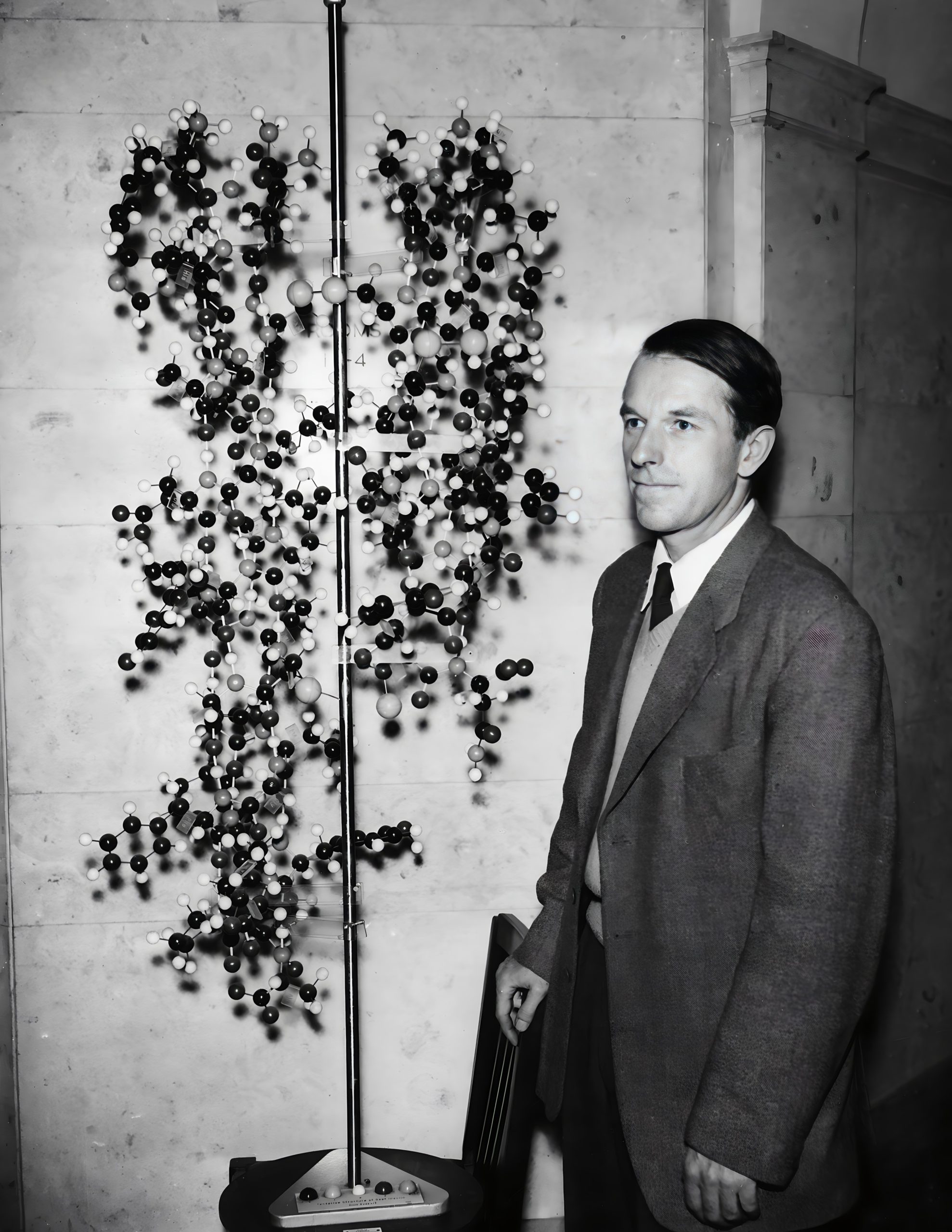
Sanger’s parents were both strongly religious. His father had served as a missionary in China and later joined the Society of Friends (Quakers). Although Frederick Sanger did not ultimately embrace his father’s faith, he was strongly influenced by the Society’s pacifist views and registered as a conscientious objector during the Second World War.
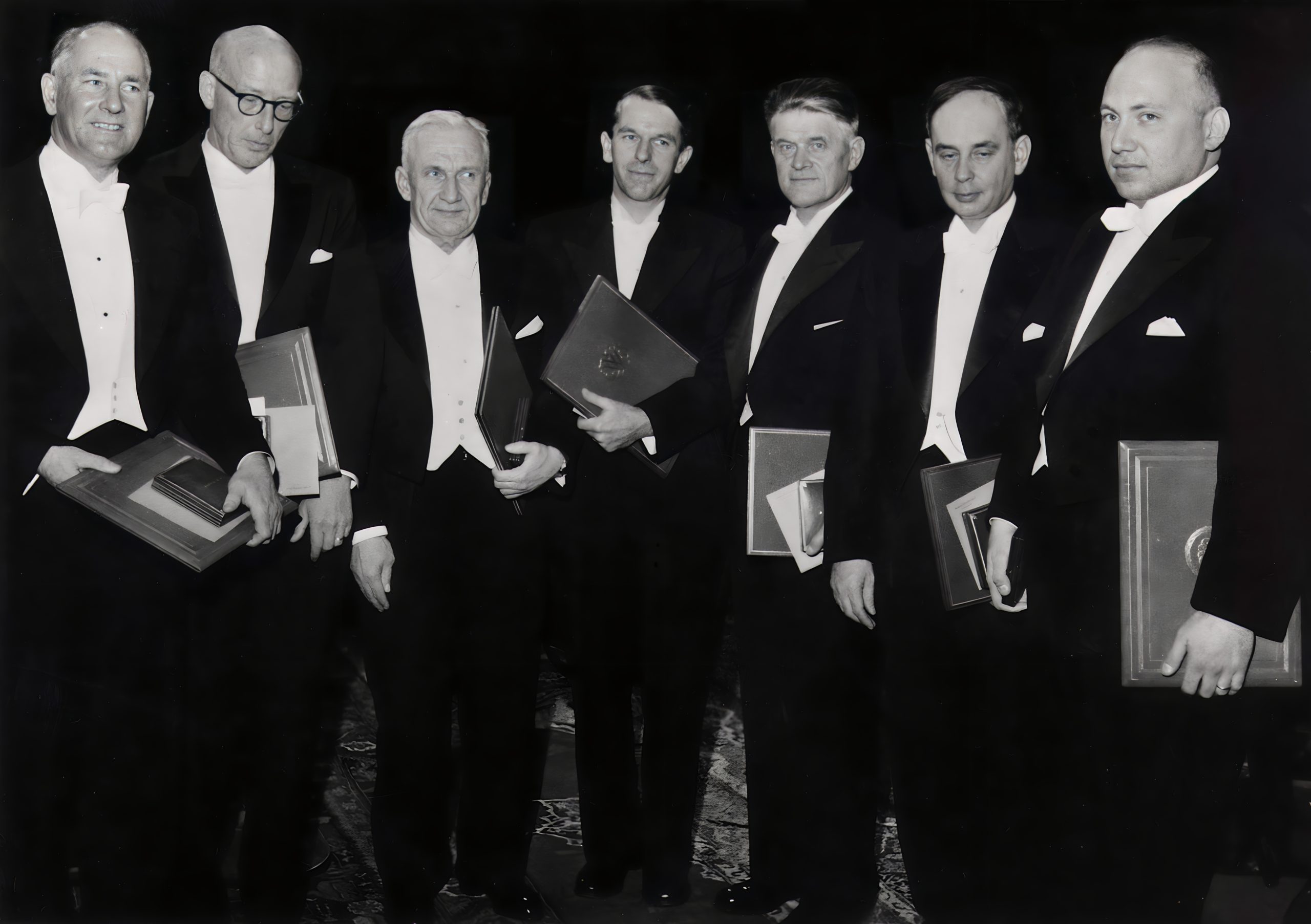
In 1940, Sanger married Margaret Joan Howe, a union that would last until the end of his life. The couple raised two sons and one daughter. Fredrick Sanger would later credited the peaceful environment of his home and family for his success in research.
Throughout his career, Sanger’s research was concerned primarily with the structure of proteins. His research on the metabolism of the amino acid lysine — carried out under the supervision of Dr. Albert Neuberger — earned him his doctorate in 1943.
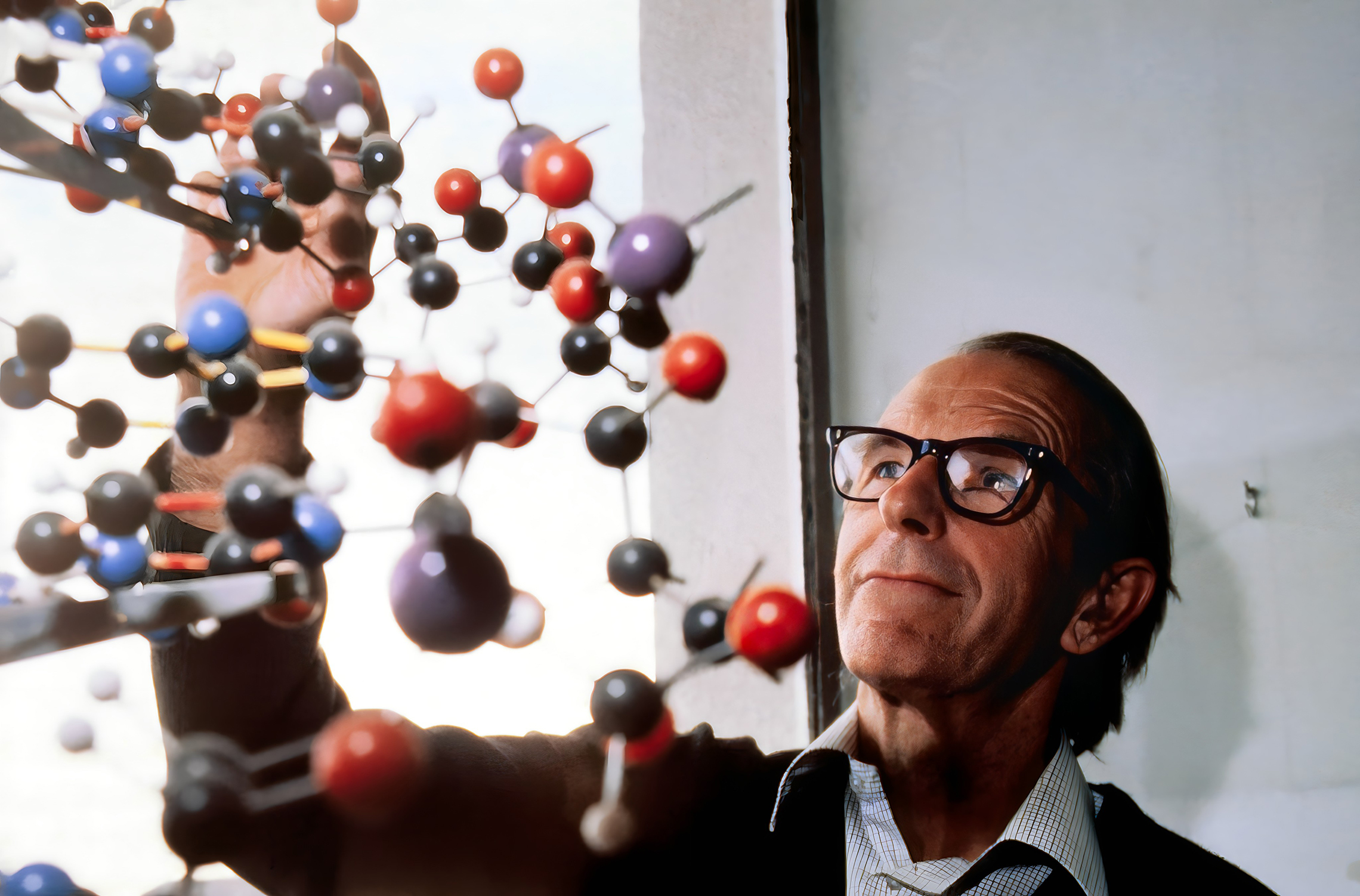
For the following seven years, Dr. Sanger was supported by a fellowship for medical research. During those years, he devised a method for determining the sequence of amino acids that make up a specific protein. He demonstrated the validity of his method by successfully identifying the sequence of 51 amino acids that make up the insulin molecule. It was the first protein ever to be so analyzed. One direct result of his research was the production of synthetic insulin, of enormous benefit for the treatment of diabetes. Sanger’s method of protein analysis has since enabled scientists to determine the structure of many other proteins.
Sanger received the Nobel Prize in Chemistry in 1958 for this research, but he had already moved on to new challenges. Through the end of the 1950s, he continued his work with proteins and made significant discoveries concerning the active centers of enzymes. In 1960, his attention turned to the nucleic acids, RNA and DNA, the building blocks of all life.

Sanger set out to create a method for analyzing the chemical sequence of these molecules, first uncovering short sequences of amino acids in RNA. He was the first to determine the base sequence of nucleic acids — adenine, guanine, cytosine and uracil — that constitute DNA. In 1975, he published a new sequencing procedure, which he demonstrated by sequencing the genome of a microscopic bacteriophage, the first living organism to have its entire genome decoded. Two years later he completed development of the dideoxy technique — also known as “the Sanger Method” — for sequencing DNA molecules. Dr. Sanger employed the new method to analyze a more complex bacteriophage, and finally human mitochondrial DNA. The Sanger Method would be adopted by all DNA researchers, with far-reaching results. This work earned Frederick Sanger his second Nobel Prize in Chemistry in 1980.
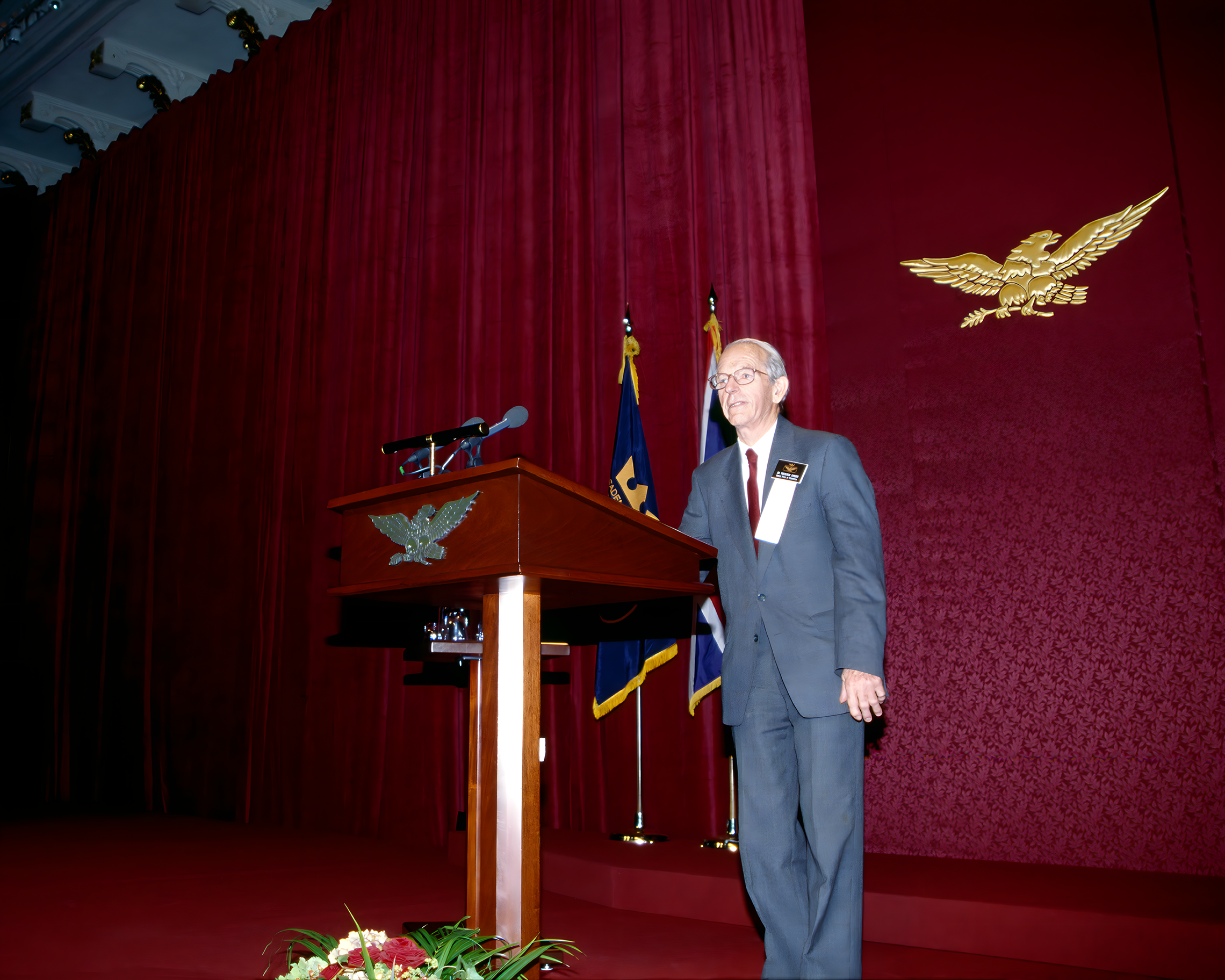
For many years, Dr. Sanger served as head of the Division of Protein Chemistry in the Laboratory for Molecular Biology at Cambridge. His former Ph.D. students at Cambridge include two fellow recipients of the Nobel Prize, Rodney Porter and Elizabeth Blackburn.
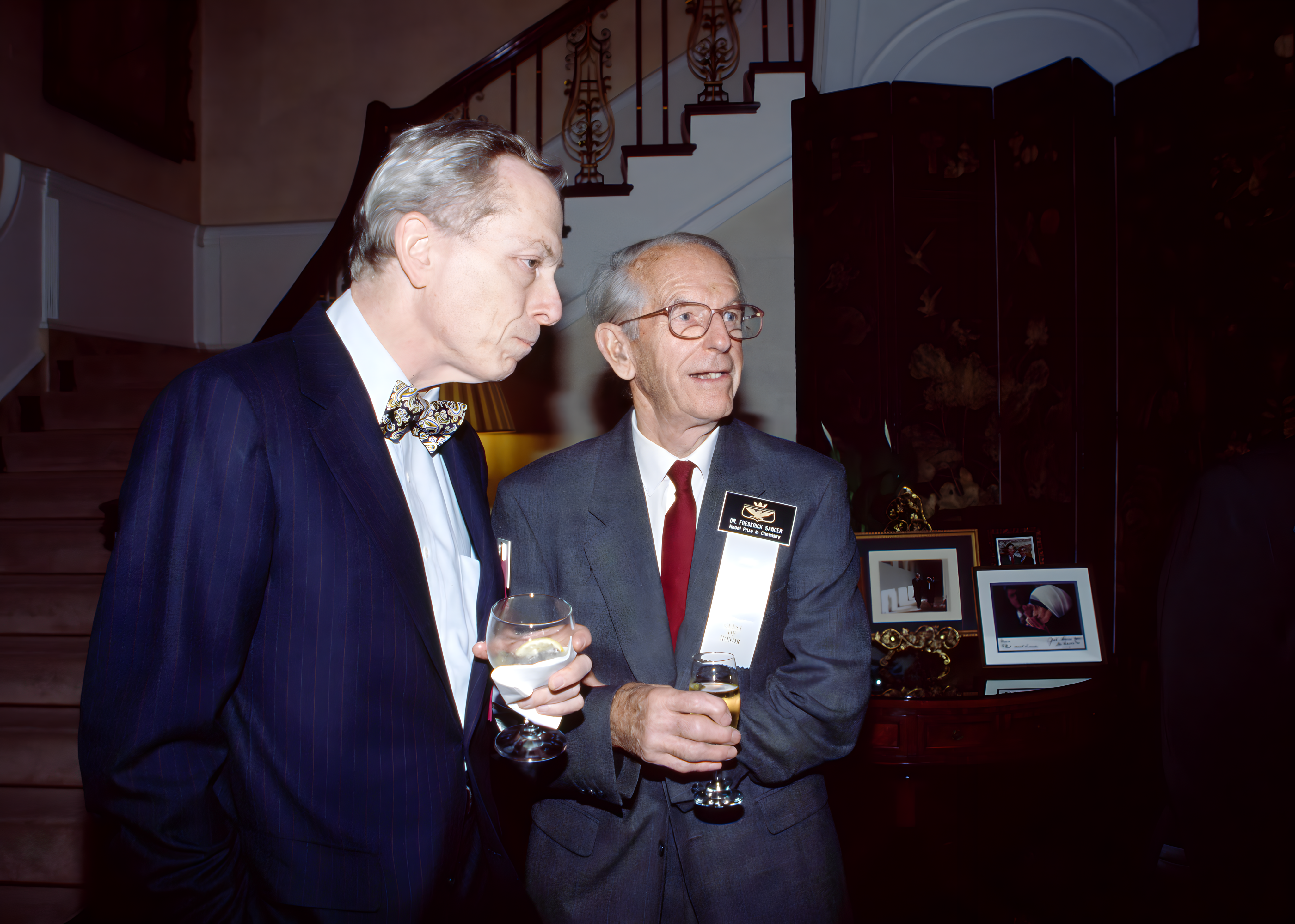
He retired in 1983, and spent the last decades of his life in relative tranquility, cultivating his garden at his home in Swaffham Bulbeck, near Cambridge. A Fellow of the Royal Society, he was showered with honors by his profession and by his sovereign, but he declined a knighthood because, he said, he “did not want to be different.”
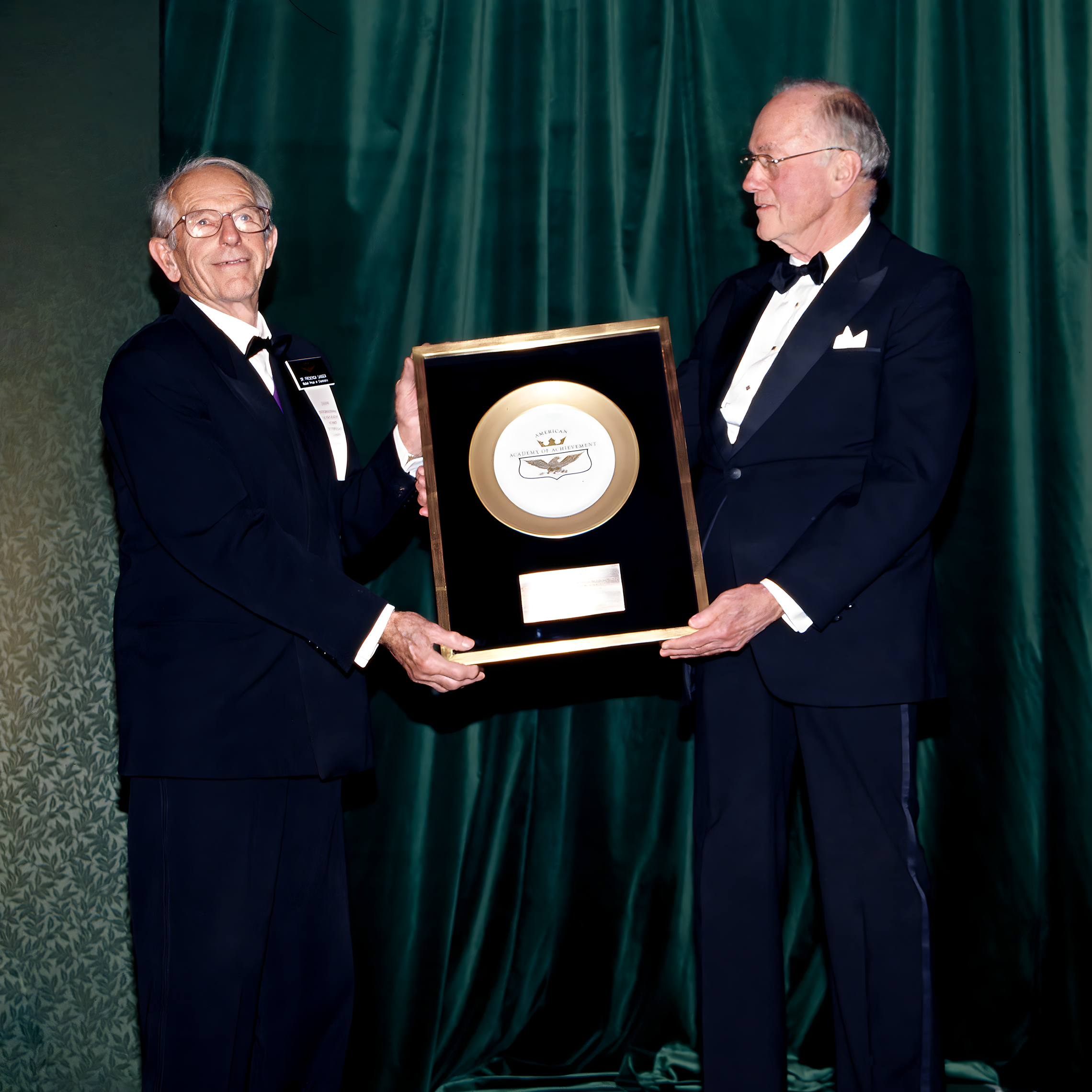
In 1992, the Wellcome Trust and the Medical Research Council created the Sanger Centre for genetic research. The Centre, now known as the Sanger Institute, played a major role in the International Human Genome Project. In his last years, Dr. Sanger had the satisfaction of seeing the Sanger Method applied to decode the entire human genome. He died peacefully in 2013 at the age of 95.

Most scientists would consider a Nobel Prize the crowning achievement of a life’s work; Dr. Frederick Sanger has won this honor not once, but twice. He received his first Nobel in 1958 for successfully determining the exact sequence of the 51 amino acids that make up a molecule of insulin. The method he pioneered can be used for the analysis of all proteins, and made the synthesis of insulin possible for the first time, with far-reaching effects for the treatment of diabetes.
Sanger then set out to do for DNA what he had done for proteins. Methods he devised have enabled scientists to determine the sequence of hundreds of base compounds in a single day, work that had previously taken years to accomplish. Dr. Sanger demonstrated his method by performing the first complete analysis of an entire organism, a microscopic bacteriophage. In 1980, Dr. Sanger received a second Nobel for this work, which lies at the heart of contemporary genetic research, such as the Human Genome Project.
Only four people in history have won two Nobel Prizes. Two were past honorees of the Academy of Achievement, John Bardeen and Linus Pauling. The others were Marie Curie and Dr. Frederick Sanger, who was the last living member of this illustrious company.
You were at Cambridge when you first became involved in biochemistry. It was quite a new field at the time. What was that like?
Frederick Sanger: I managed to get into the biochemistry lab, and the person I worked with was Albert Nyberg. He was my Ph.D. advisor, and of course, when you first start doing research, you’re pretty helpless. I mean you don’t think of the project yourself. So, I did the projects which he showed me and which were fairly mundane sort of subjects, metabolism, and I think he taught me a lot, because he really taught me how to do research. I don’t think we made very important discoveries at that stage, but he did show me how to do research. I mean it’s quite different from working at school, when you, you know, have got to work out your own subjects and you’re working on one thing, and you don’t know what’s going to be the result. I mean, in school, you just put your things together and you know what’s going to happen. If it doesn’t happen, you’ve made a mistake. But if you’re doing research, then if it doesn’t happen, that’s sometimes just as important as if it had worked, and I think the sort of philosophy of research is important, and I think he did teach me that very well, really, by his example.
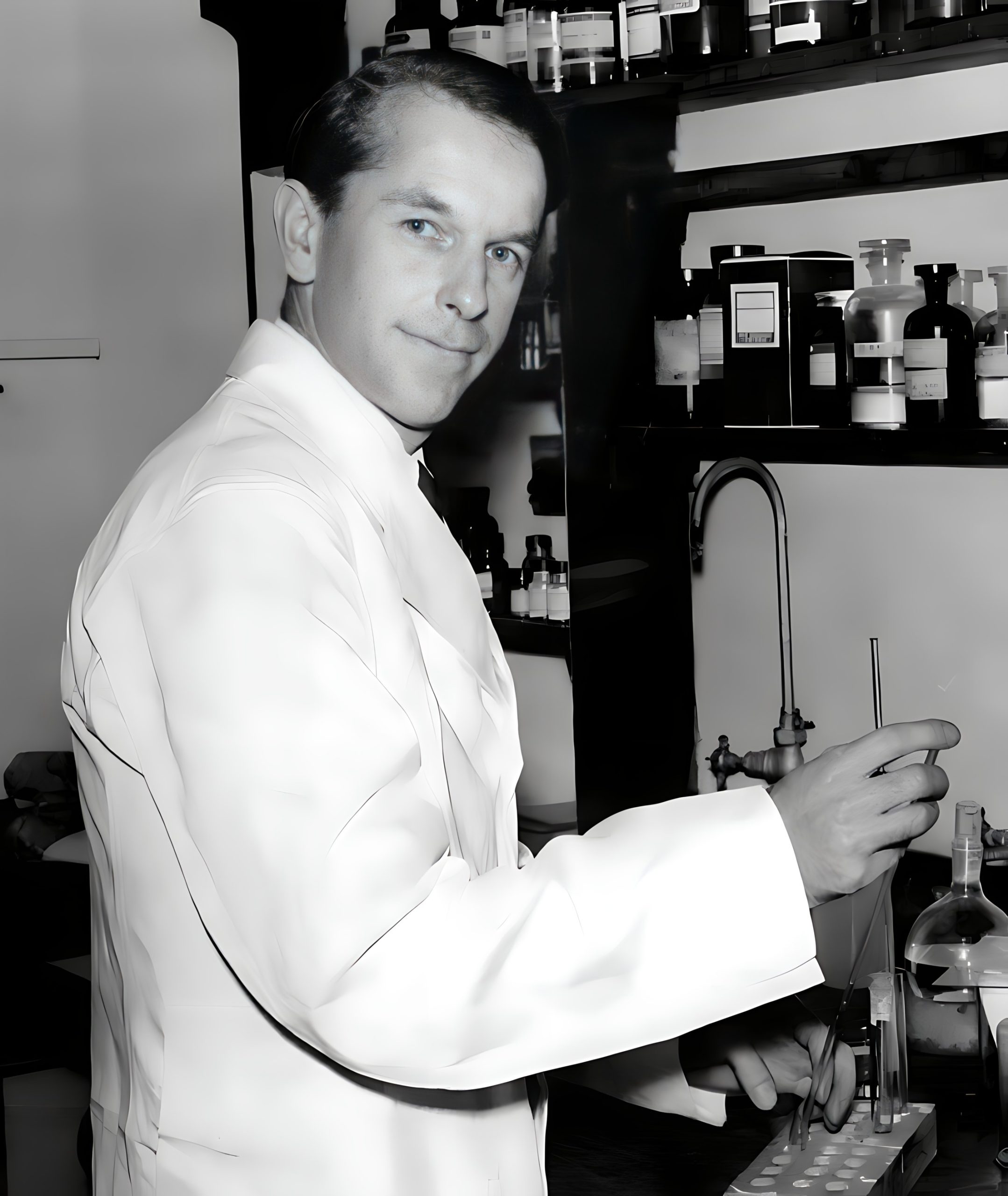
How did you get started on the path that led to your first Nobel Prize?
Frederick Sanger: Well, you know, one can make a good story out of it. At the time, about 1943, there wasn’t a lot known in biochemistry. One of the most important substances at that stage were the proteins. That’s what we’re built up of. That’s really what makes us. And there was quite a lot of interest in proteins, but nobody knew the exact structure of them and the sequence of the amino acids, you know, the long chains of these amino acids, and there are 20 different amino acids and different chemical side chains, and what makes the protein is just the arrangement of these side chains on it. In the biochemistry lab, the big interest was in enzymes. Those are proteins which catalyze other reactions. You have these proteins that have this very essential activity of catalyzing other reactions, and there was a lot of interest in them, and what actually happened was, of course, I had finished my Ph.D. and I was at loose ends, and I wanted to go on doing research.
There was a new professor that came to the lab, Professor Chibnall, who worked on proteins, and he brought a group with him, and he offered me a job, and the first job he offered me was to study insulin, which is the — you know, the substance that they give to diabetics, which was a fairly small protein, but they didn’t know anything about the actual chemical structure of it, except that it was built up of amino acids. And he and his group were mainly involved in the analysis of it, how many of the different amino acids were there. So, he gave me this job, and that’s really what put me on the ladder, really, because my expertise has all been in sequencing, sequencing of amino acids and proteins and, later on, nucleic acids, DNA.
Insulin was particularly suitable, because it had a lot of small chains, really, and the project he gave me was to try and identify the ends of the chains by chemically labeling them. We could label them with a colored substance, in fact, and so I introduced this method, really, with what’s called the DNP method, which was a quick and easy way of identifying the ends of the chains. And the things that made that possible at that time were chiefly a new method of separating things, fractionating chromatographic — it’s called partition chromatography, and you could make these yellow compounds and fractionate them and identify them, and that was the first thing I did. I mean I didn’t have any sort of grand ideas like sitting down and saying, “I’m going to sequence a whole protein,” or anything like that. I mean that makes a good story, because that’s what I did in the end, but the first step was just to identify these one or two, actually, two groups at the ends of the chains, and that was the first thing I did, and there was a problem, really. These were yellow substances which you could separate nicely, and we got two, which were glycine and phenylalanine, so we had identified the end groups, but we had one problem, that the glycine one, if you hydrolyze it too long, it would break down. So, we had to hydrolyze it for a very short time, and when we did this, we found there was another yellow substance turned up, and this yellow substance turned out to be the dye peptide that is two amino acids joined together, and so, I identified this, and it was — showed me that the end group was phenylalanine and baline, and that was the first peptide, first sequence that was ever determined in a protein.
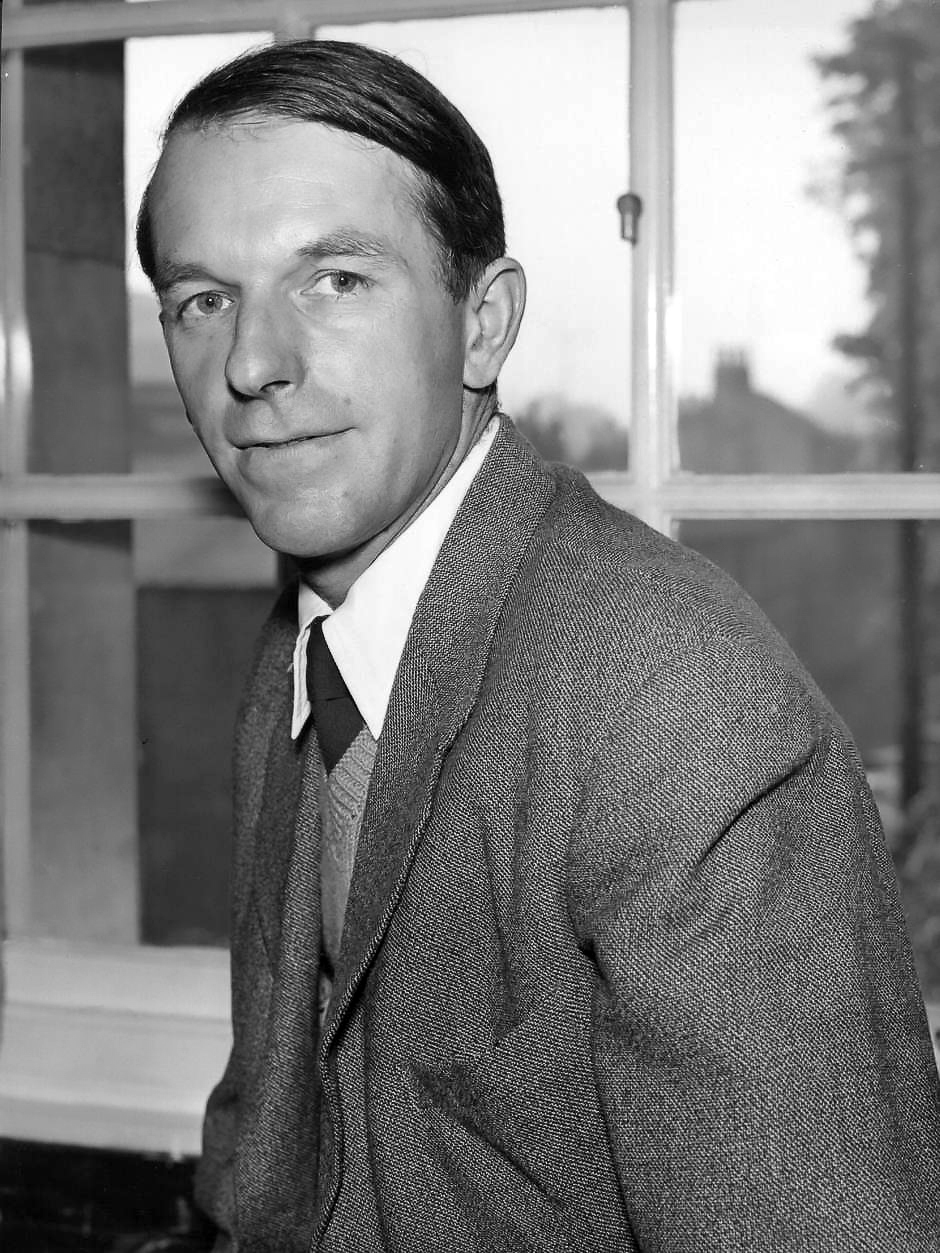
Was there a moment when you realized that you were onto something important enough to lead to a Nobel Prize?
Frederick Sanger: One doesn’t think about Nobel Prizes all that much when you’re working at the bench. You’re interested in what you can do. I mean I was excited that I could get the peptide, and I extended that a bit, and I got some more sequences at the ends of the chains, and I think the main consequence of it was that then I realized that, you know, it was possible to do more sequencing and to do — and with other colleagues, we actually completed the complete sequence of the insulin, which — I mean it took quite a lot of time, but it did put me on the road and really decided my future work, and you know, all my work, all the work that’s really paid off, has been on sequencing, initially the proteins.
It’s really mostly involved in finding methods, really, finding out how to do it, and it does depend very much on other work in other labs. I mean in the case of these end groups, it depended very much on the work of Archie Martin, who was a rather brilliant physical chemist, and he invented a method of fractionation — I think I’ve already mentioned it, this partitioned chromatography, and then, later on, he developed another method, a two-dimensional paper chromatography, where you can just put your stuff on a sheet of filter paper and run solvent through the paper and you separate all the small fragments, the peptide, little bits on the paper, and we did a lot of this and cutting out the spots, seeing what amino acids they contained. So, you got little fragments, and then you had to work out how they could be fitted together, a jigsaw puzzle sort of a thing, sort of a jigsaw puzzle approach, fitting little bits together, and that was essentially the method that was used for protein sequence analysis.
What kind of personal characteristics does it take to do that kind of scientific inquiry?
Frederick Sanger: I don’t know. I think you want to do it, really. That’s what I did. Once I’d started on it, then there’s another experiment to be done, and it’s really exciting. Some people get a bit bored by that.
What is it that is exciting to you?
Frederick Sanger: I think I like just doing it, and doing something with my hands, but there is the sort of pleasure of knowing that you’ve found something and you’re the only person in the world who knows it, and it’s rather exciting. It’s really your own, and nobody else knows this.
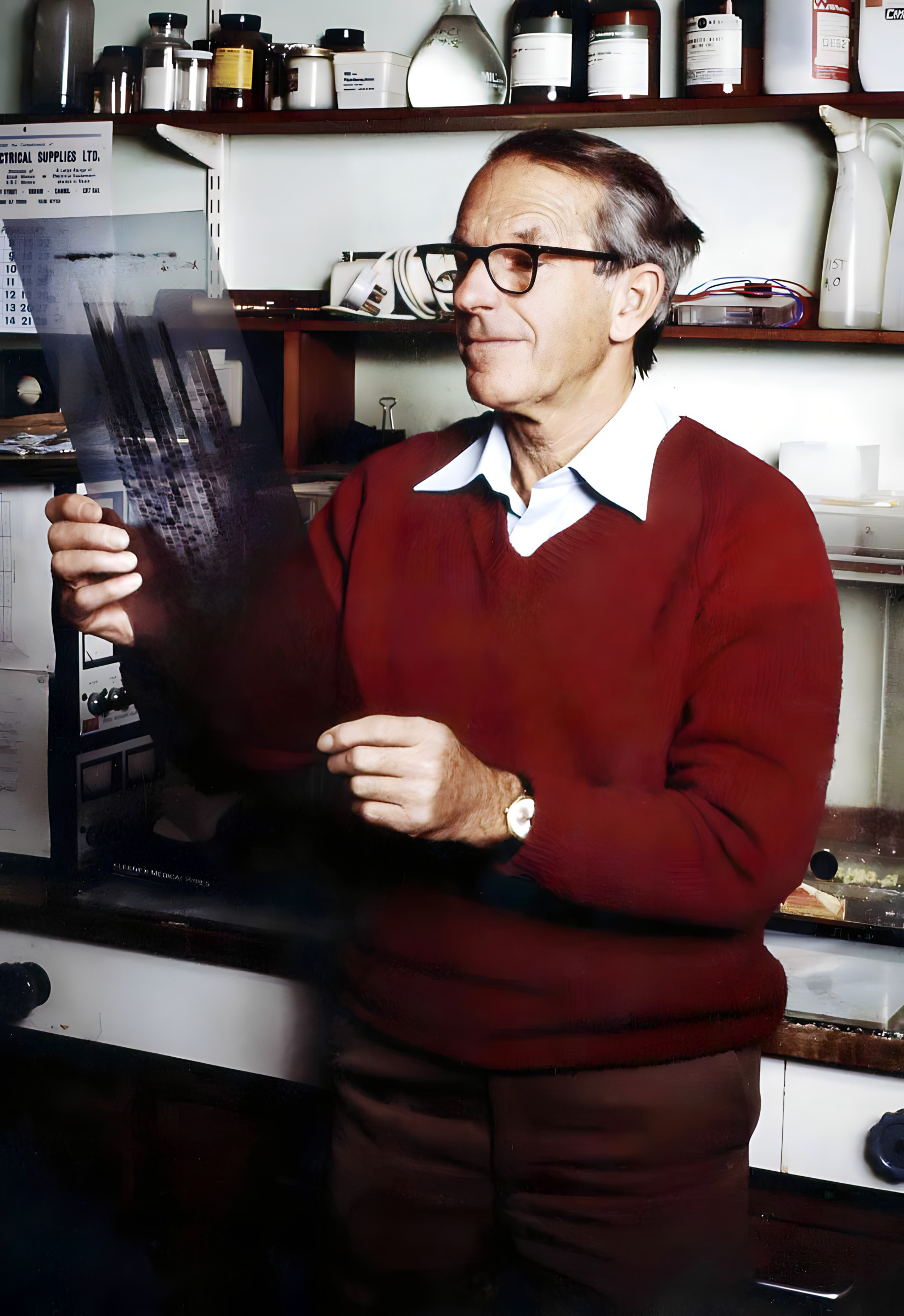
What did it mean to you to win the first Nobel Prize?
Frederick Sanger: Well, that was really exciting. I wasn’t altogether too surprised, because it was the first protein that had ever been done, and I think I got much more pleasure out of doing the work, but it was very exciting. I mean, science is not like the Olympic games or something where there’s a lot of people all trying to win gold medals and if you don’t get a gold medal, you’re nothing. There are actually a lot of people working together and contributing to the science, and the science is the important thing, the knowledge, the increasing knowledge, and I think that is much more important than a gold medal. If you read the newspapers, you get the idea that it’s just a game and you get a medal and that’s it, but there’s more to it.
For many people, winning one Nobel Prize might have been enough, but you kept going. At that point in your career, what motivated you?
Frederick Sanger: I was only 40 when I won the Nobel Prize, and a lot of people, when they win a Nobel Prize, they get a big job as the head of a lab and usually give up doing research, but I didn’t want to do that, and I wouldn’t have been any good at it. So, I carried on doing research, and that was the sort of life I wanted to live, and I wasn’t going to retire at 40, and about that time — that was 1958 — about that time or shortly after — I’d been working on other proteins and doing things which didn’t amount to very much, but people got interested in nucleic acids, and these are really important components of living matter, and like proteins, they are built up of long chains, long chains off into sort of smaller fragments, smaller residues.
But in the case of DNA, what I finally ended up with, this has the four components which they call A, G, C, and T. These are chemical entities, and the sequence of these is what defines the language of the DNA. DNA is enormous in the case of any substance, compared with the protein side. So, it was a much more difficult problem. You had the four components, and you had to try and determine the order of them in DNA chains. I’d done a good deal of preliminary work on the other nucleic acid, which was RNA, which was smaller, and you could sort of use methods similar to the ones I’d used for the proteins, but it was fairly slow, and it wasn’t too easy. You see, if you’ve got only four components, four letters, as it were, in the language, then to get a meaningful sequence on something that is fairly big, you’ve got to get a fairly long piece out, and long pieces are difficult to fractionate, and we had very limited success using the type of method which we had used for proteins. So, eventually, we did get on to an entirely different method.
Working in your lab, confronting the unknown, do you ever get discouraged or have self-doubts about what you’re doing?
Frederick Sanger: I think I had a rather sort of — what I’d call lean years between doing the proteins and the nucleic acids. I didn’t get anything very exciting, but it was good enough to keep me going. Fortunately, I didn’t have to sort of, you know, make reports and justify my existence. I think, nowadays, everybody has to put in a report and a proposal of what research you’re going to do, and it does rather limit you, and it sort of points out how little you’ve done. But I did have a period when I didn’t have any papers or anything published. So, I did get a bit discouraged, but once I got onto the nucleic acids and I began to get new and exciting methods, it was getting very exciting again. Ultimately, you see, I managed to develop a method for doing DNA, which is entirely different from the jigsaw puzzle approach that we used with proteins, and is very rapid and simple to do, and this is the method that is being used now for the human genome on a rather large scale, very large, because the human genome is not a smaller thing like insulin. It’s three billion of these residues long, and that’s quite a project.
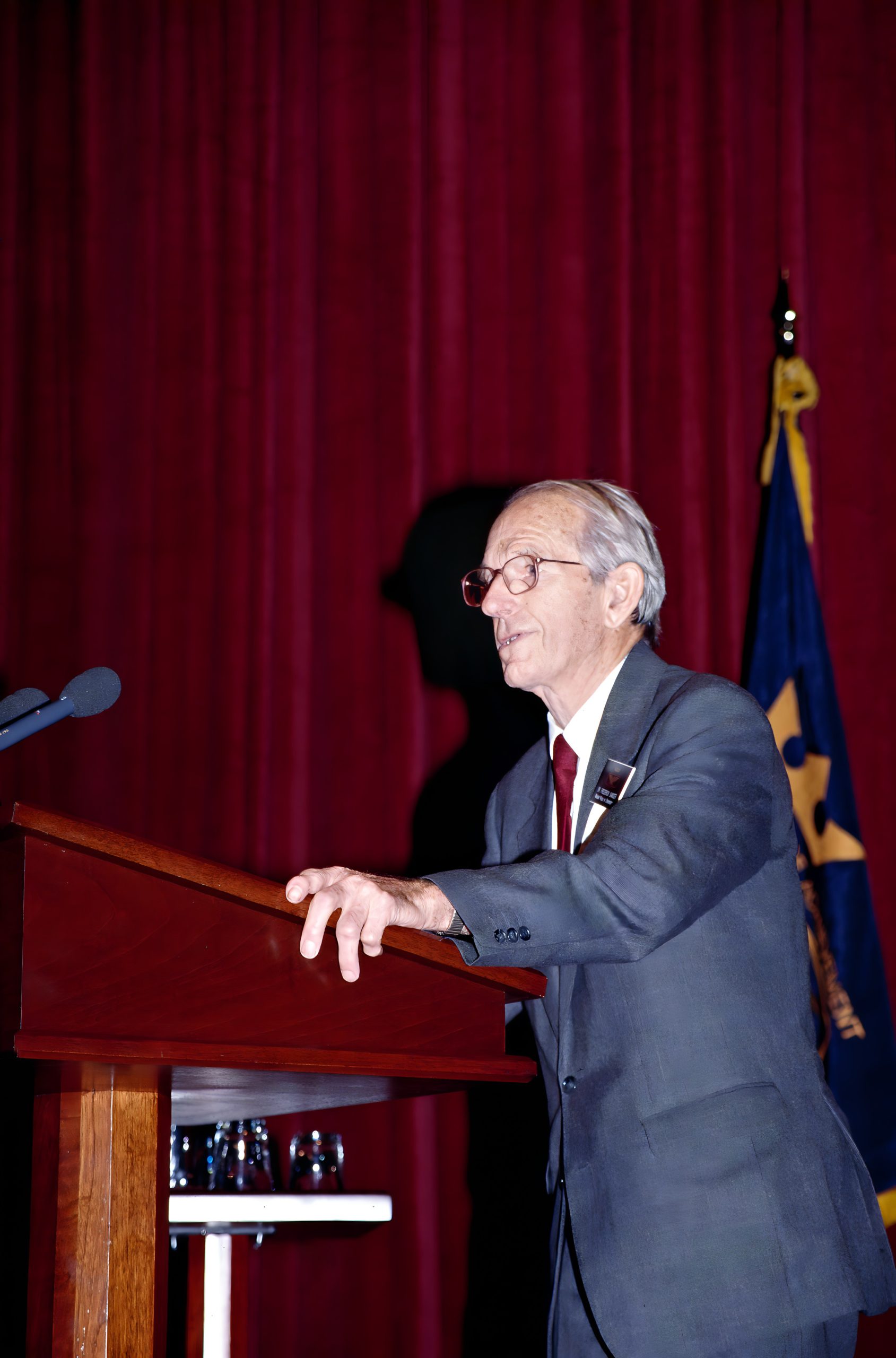
Did you foresee the day when we would be this close to decoding the human genome?
Frederick Sanger: Well, not originally, no. I think one saw it was going to be possible, but not ’til a few years ago, about 20 years ago, actually. I’ve been retired for 15 years anyhow, but when we got these new methods it looked hopeful. We started working on a very small substance. It was a virus which lives on bacteria, and it was like 5,000 residues long, and this was quite a breakthrough. We managed to get a complete sequence of that, and that was the first thing, and then we tried some things a little bit longer, some more viruses before I retired. Since I’ve retired, of course there’s been a lot of money put into it. Doing the human genome, I think, was first suggested about 20 years ago by a chap in California, and he applied for a million dollars, but they wouldn’t give it to him. Now of course, they’re throwing millions into it.
Money does matter.
Frederick Sanger: It does, certainly, on that scale. Of course, there have been great improvements on the method which I developed, especially in robotics and in data processing.
Looking ahead into the 21st century, what is the greatest challenge in your field?
Frederick Sanger: Well, I think the human genome is the thing that’s going on very rapidly at the moment, of course. This sequencing method which I developed is being very much automated and improved, and people are using it in many countries, and they’re really getting on with working out these sequences. And what it tells you, you see, is what is the instruction book, really, for the human body. I mean DNA is what we are, really. I mean we are DNA, and DNA can make us, makes the whole body, puts everything in the right place and puts all the proteins in their right places and controls everything that goes on. So, to understand medical science, I think, to understand the DNA is important, and particularly in genetic diseases, where there is a change, probably, in the sequence of the DNA, which is causing trouble, and already, of course, they have found some of these things and they know what genes are involved, and the big challenge now is to see if you can use this knowledge to prevent diseases and to make life happier.
I think, in the press, there is a lot of overstatement. They say, you know, human genome will find a cure for cancer and people will live to 130 and that sort of thing, but that is just pure science fiction at the present. It might happen, but I think there’s a chance that there will be — well, there are already factors found out which are involved in forming cancers. But there’s a lot to be done, still. I mean if you’ve got just the sequence of the letters in a book, if you didn’t know the language, you wouldn’t get anywhere, would you? And that’s what you’ve got to do first, and then read it and find out what proteins are being made and how everything is working, and that’s a big job, and there are a lot of people doing that. It’s going to be very exciting work, I think, particularly if they can find useful cures for diseases. All sorts of things that you can think might be possible, but of course, when you haven’t done the experiments and the tests and all that, then you don’t quite know. That’s a field I should think I would go into if I wasn’t getting so old. I retired completely 15 years ago. So I haven’t done any of the work on the human genome, but I just follow what’s going on, and it’s very exciting to see that — I think more exciting than getting a Nobel Prize.
